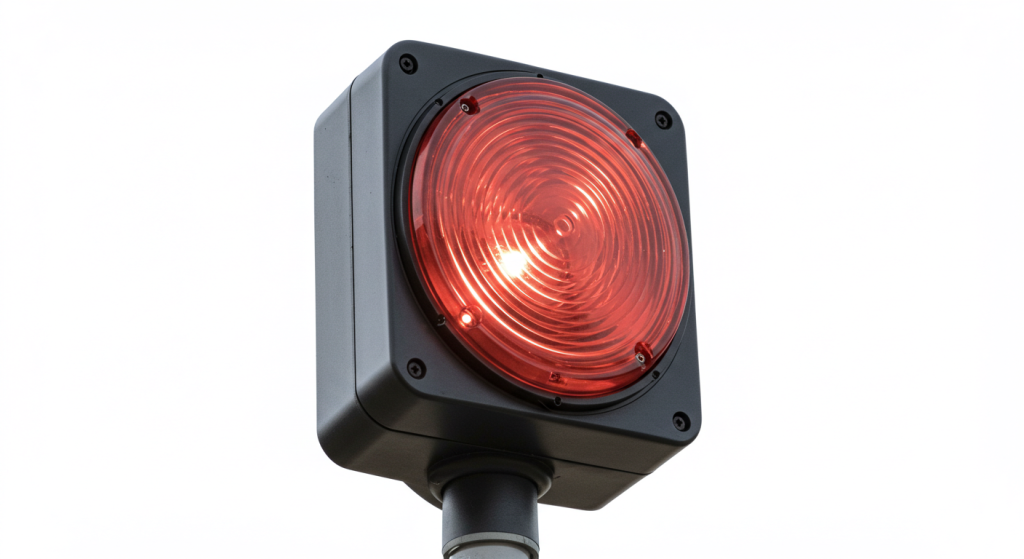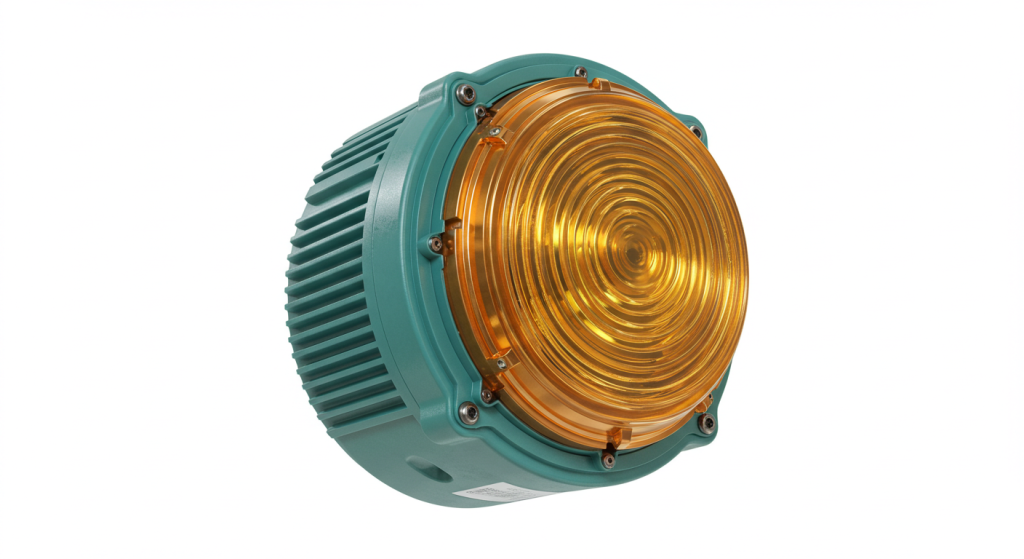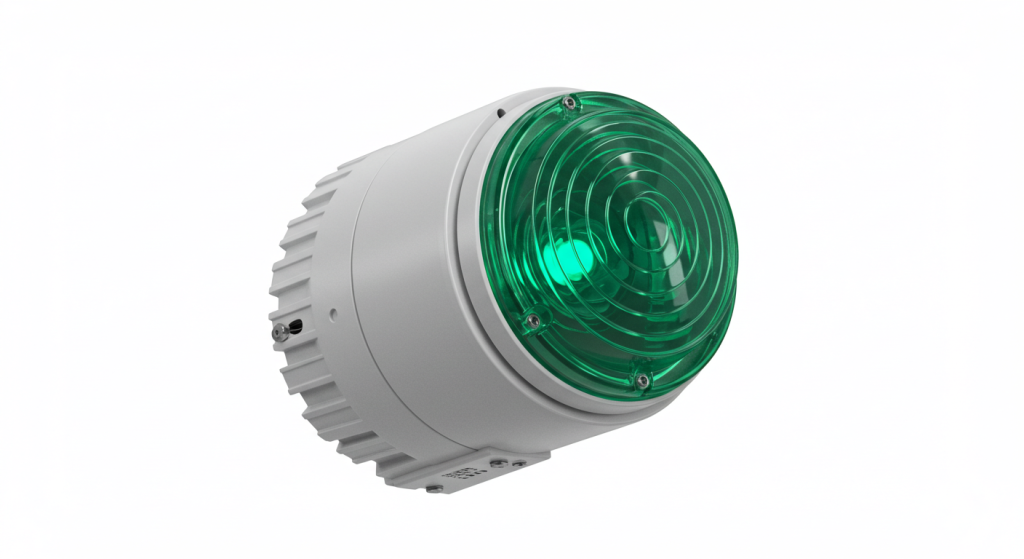Ensuring aviation safety requires a comprehensive understanding of obstruction lighting, and the question of Which is the best FAA obstruction lighting is a critical one for anyone involved in airfield operations or building tall structures. The optimal choice depends on numerous factors including the height of the obstruction, its location, and the specific FAA regulations that apply. In addition to traditional obstruction lights, other aviation-specific lighting solutions, such as What is helideck perimeter light, also play an important role in aviation safety. This guide provides a detailed exploration of FAA obstruction lighting standards and guidelines.

Understanding FAA Obstruction Lighting
The Federal Aviation Administration (FAA) establishes strict guidelines for marking and lighting obstructions to ensure the safety of air traffic. These guidelines are designed to make tall structures, such as towers, buildings, and wind turbines, highly visible to aircraft. The specific type of lighting required depends on the height and location of the obstruction, as well as proximity to airports or flight paths.
What is the Standard for Obstruction Light?
The FAA standard for obstruction lighting is comprehensive and includes specific requirements for light intensity, color, flash rate, and positioning. The primary goal of these standards is to ensure that obstructions are visible to pilots from a safe distance. There are different lighting systems based on the structure’s height, which range from low-intensity to high-intensity, with different light types (steady-burning, flashing, strobe) and different colors (primarily red or white). The standards are based on height above ground level and surrounding environment.
What are the FAA Requirements for Obstruction Lighting?
The FAA’s requirements for obstruction lighting are detailed in FAA Advisory Circular (AC) 70/7460-1, which is regularly updated. This document outlines specific standards for various types of obstructions and their required lighting systems. The requirements are dependent on the structure’s height, proximity to airports, and whether the structure has any shielding effects. The FAA requirements cover a wide spectrum of structures including communication towers, wind turbines, buildings, and other tall structures that could pose a hazard to aviation. These guidelines emphasize not just the types of lights, but their placement and operational conditions.

FAA Obstruction Lighting Requirements
FAA obstruction lighting requirements are very specific. For example, structures taller than 200 feet above ground level (AGL) generally require medium-intensity or high-intensity lighting systems. These can involve steady-burning red lights or white strobe lights or combinations of them. The specific types of lights and their configuration are defined by the FAA document AC 70/7460-1. The FAA guidance also covers the requirements for nighttime and daytime lighting configurations.
FAA Tower Lighting Requirements
FAA tower lighting requirements are a subset of the general obstruction lighting standards. Communication towers, wind turbines, and other similar structures are often subject to specific lighting standards based on height and proximity to airports. For example, towers in the vicinity of airports will typically require more intense lighting and a different configuration compared to a tower in a rural area. The FAA ensures towers are safely illuminated for pilots from all angles.
FAA Obstruction Marking and Lighting
In addition to lighting, FAA guidelines also cover obstruction marking using color patterns on the structures, especially during the daytime when lights may not be as easily seen. These can include alternating color patterns using white and orange or black and yellow colors. The colors and patterns are critical for ensuring that pilots can see these towers from a reasonable distance. The combination of marking and lighting provides both daytime and nighttime visibility.
Exploring Different Types of Obstruction Lights
There is a variety of lighting solutions available for different types of obstructions and their respective requirements. These include low, medium, and high-intensity lights, each with distinct applications.
Low Intensity Obstruction Lights
Low intensity obstruction lights are typically used for structures less than 200 feet AGL. These are usually steady-burning red lights, which indicate the presence of an obstacle. Low intensity lights are effective for shorter structures and are a cost-effective solution for marking lower level obstructions.
l-810 LED Obstruction Light
The L-810 is a common type of low intensity LED obstruction light. L-810 lights are typically steady-burning red lights suitable for structures that do not require high-intensity lighting. They are energy efficient and are used on a wide variety of structures. These lights are very popular because of their energy saving features.
FAA Style A Lighting
FAA Style A lighting usually refers to the use of low-intensity, steady-burning red lights. This type of lighting is commonly used for shorter towers and structures. These lights are compliant with the basic FAA lighting standards for lower height obstructions.
Medium Intensity Obstruction Lights
Medium-intensity obstruction lights are used for structures ranging between 200 and 500 feet AGL. These can be either steady-burning red lights or white strobe lights during daytime, with red or white flashing lights at night. The choice between the type of light usually depends on the location of the structure and the proximity to aviation operations.
High Intensity Strobe Lights
High-intensity strobe lights are typically used for structures exceeding 500 feet AGL. These lights emit very intense white flashes, making the structures highly visible during both daytime and nighttime conditions. The intense flashes from these lights make it impossible to miss them during all weather conditions. These high-intensity strobes are critical for ensuring maximum safety.

Additional Lighting Considerations
Besides FAA-mandated obstruction lights, there are other specialized aviation lighting applications that contribute to overall safety.
Aviation Obstruction Light
Aviation obstruction light is a general term that refers to any lighting system used to make obstructions visible to pilots. This can include lights on towers, wind turbines, buildings, and other structures. The specific type of light will be determined by specific needs outlined by the FAA or local aviation authorities. Ensuring these lights are in compliance with all current standards is paramount.
FAA Lighting Requirements for Aircraft
The FAA also sets standards for aircraft lighting, requiring that all aircraft are equipped with navigation and anti-collision lights. These lights are essential for aircraft visibility to other aircraft and ground-based operations. Aircraft lighting regulations are critical to the overall aviation safety system.
Aircraft Warning Lights for Buildings
Buildings located near airports or in the path of frequently used flight routes require aircraft warning lights. These lights are similar to obstruction lights but are used to mark the presence of buildings. These ensure the safety of pilots approaching or departing from airports.
What is Helideck Perimeter Light?
What is helideck perimeter light? These lights are specialized for use on helipads and are designed to delineate the perimeter of the landing area. These are usually steady burning lights with specific color, usually green. The function of perimeter lights is to guide pilots during landing and takeoff of helicopters. These lights help clearly define the helipad surface for pilots, especially at night. Ensuring all what is helideck perimeter light requirements are met provides a safe environment for helicopter operations. It’s critical for all helipads to meet minimum visibility and safety requirements.
Cost and Installation of Obstruction Lighting
The cost of FAA-compliant obstruction lighting systems can vary significantly based on the type of lights used, the height of the structure, and installation costs. Low intensity lights are significantly less costly than high-intensity systems. LED lights are more expensive initially but offer long-term energy savings and reduced maintenance expenses. Installation costs depend on the size and complexity of the structure and local labor rates.
| Type of Lighting | Approximate Cost Range (per unit) | Notes |
|---|---|---|
| Low Intensity LED (L-810) | $100 – $500 | Steady-burning red lights, lower structures |
| Medium Intensity LED | $500 – $2000 | May include both red and white lights, mid-range structures |
| High Intensity Strobe Light | $1500 – $5000+ | Powerful white strobes, tall structures |
| Helideck Perimeter Lights (LED) | $200 – $800 | Specialized lights for helipads |
Why to buy high intensity strobe light
When dealing with very tall structures or those located in areas with high air traffic, the need for maximum visibility and safety becomes paramount. This is where high-intensity strobe lights come in, making a strong case for Why to buy high intensity strobe light. These lights offer the highest visibility of all obstruction lighting options. Their bright white flashes make it virtually impossible for pilots to miss, even in poor weather conditions or bright daylight. Why to buy high intensity strobe light is especially relevant for structures exceeding 500 feet AGL or those in high-risk areas near airports. These strobes provide a clear and unmistakable warning signal for pilots, maximizing their ability to avoid obstructions. The safety benefits alone justify the investment and will likely lower insurance costs by showing due diligence.
In addition to their enhanced visibility, modern high-intensity strobe lights also offer long-term cost savings due to their energy-efficient LED designs. This reduces ongoing energy and maintenance costs over the long-term operational lifespan of the lighting systems. In comparison to other obstruction light options, a high intensity light also greatly minimizes the risk of non-compliance and potential fines. Why to buy high intensity strobe light is a simple answer – for safety, compliance, and long-term cost efficiency.
Determining Which is the Best FAA Obstruction Lighting
Finally, let’s revisit the initial question of Which is the best FAA obstruction lighting. The answer is not a simple one; there is no single “best” type of lighting. The optimal solution will depend entirely on the specific needs of a given project. It needs to be determined based on height, location and local FAA guidelines. For instance, a short communication tower might only need low intensity red lights. On the other hand, a very tall wind turbine will almost certainly need high intensity white strobe lights. Any structure located near an airport might have additional requirements. It is vital to consult AC 70/7460-1 for the most current information on regulations. It is always recommended to consult with the FAA directly. There are often complex requirements based on different local regulations which need to be understood before selecting an obstruction lighting system.
Also, ongoing maintenance plays a key role in ensuring these lighting systems remain fully compliant with all current FAA guidelines. The ongoing operational maintenance should be included in all plans. In summary, deciding Which is the best FAA obstruction lighting is a very complex and nuanced process. The process should involve analyzing the project’s specific needs and following FAA guidance for the appropriate lighting solution for safety and compliance. The consideration of What is helideck perimeter light needs to be included in the plan and the consideration of Why to buy high intensity strobe light for more demanding requirements needs to be addressed. This comprehensive approach will help you select the best solution for your specific needs.